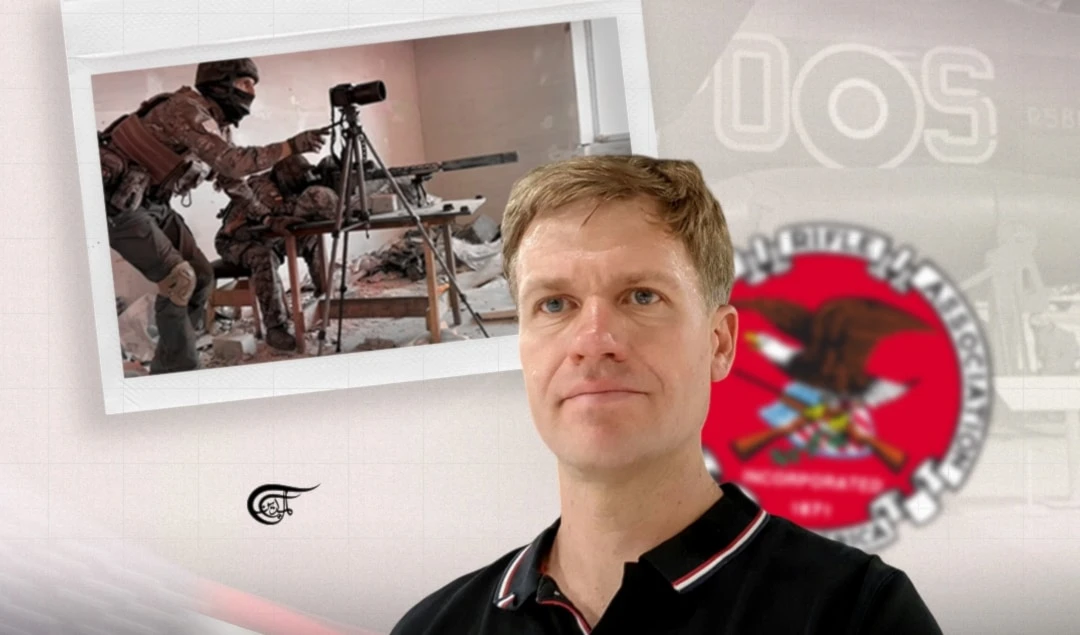Did British intelligence create a Neo-Nazi militia?
Kiev’s collapse cannot be far away. When that day comes to pass, Centuria will be lying in wait throughout Europe, ready to deliver retribution to the people and governments who allowed it to happen.
-
![“[Centuria] envisions a future where ‘European right forces are consolidated and national traditionalism is established as the disciplining ideological basis for the European peoples.’” (Al Mayadeen English; Illustrated by Batoul Chamas)](https://alpha-en-media.almayadeen.net/archive/image/2024/4/13/e5ac2a19-4474-4558-9f5c-0a87483cf1ab.png?v=2&width=1000)
“[Centuria] envisions a future where ‘European right forces are consolidated and national traditionalism is established as the disciplining ideological basis for the European peoples.’” (Al Mayadeen English; Illustrated by Batoul Chamas)
In mid-February, Berlin’s Junge Welt revealed how Centuria, an ultra-violent Ukrainian Neo-Nazi faction, has since the war in Ukraine cemented itself in six cities across Germany, and is seeking to expand its activities across Europe, influencing populations and governments to adopt their horrendous worldview. Disturbingly, they’re not the only fascist militants from Kiev with major political and societal ambitions, going under the name of Centuria. As we shall see, there are strong indications the latter is the monstrous offspring of British intelligence.
Centuria’s activities are outlined in a detailed report from George Washington University’s Institute for European, Russian and Eurasian Studies (IERES). It notes that the group’s parent organisation is a “self-described order of ‘European traditionalist’ military officers that has the stated goals of reshaping the country’s military along right-wing ideological lines, and defending the ‘cultural and ethnic identity’ of European peoples against ‘Brussels’ politicos and bureaucrats’”:
“[Centuria] envisions a future where ‘European right forces are consolidated and national traditionalism is established as the disciplining ideological basis for the European peoples.’”
IERES reported that Centuria’s military wing began training in 2018 in Ukraine’s Hetman Petro Sahaidachny National Army Academy (NAA), Kiev’s “premier military education institution and a major hub for Western military assistance to the country.” From there, many of the group’s members were drilled by top Western military institutions alongside British, Canadian and American special forces officers. In turn, its operatives traveled to Western military training centres, spreading Neo-Nazism every step of the way.
In March 2018, major controversy over Azov’s unabashed Neo-Nazism prompted US Congress to prohibit provision of “arms, training, or other assistance” to Azov, which has been formally integrated into Ukraine’s National Guard since 2014. Yet, while activists and some lawmakers have since urged Washington to designate Azov a terrorist organisation, Washington refuses to do so. And no Western government has demanded that Kiev purge the fascist movement from its Armed Forces, or otherwise disassociate from Azov.
It may be the case Centuria was explicitly created as a means of circumventing legal barriers and avoiding public outcry associated with direct backing of Azov Battalion, described by The Guardian in September 2014 as at once “Ukraine’s greatest weapon” and “greatest threat”. Another complementary explanation is Centuria was intended to universalize the ultranationalist politics and perspectives widely held by Western-sponsored Maidan activists, and popularise their far-right views among Ukraine’s general population. After all, Ukrainian fascists’ preponderance at Maidan’s forefront did not translate to electoral success and formal political power subsequently.
Hidden British Hand?
Who or what ultimately masterminded Centuria’s sinister mission isn’t clear. Yet, there are palpable echoes in the group’s push to “reform” Kiev’s military, before exporting its fascist dogma throughout Europe, in the malign grand designs of longtime NATO and British government defence advisor Chris Donnelly. This journalist has repeatedly exposed his covert leadership of Britain’s premier contribution to the Ukraine proxy war, in conjunction with ultranationalist, anti-Communist Lithuanians.
Long before Moscow’s forces entered Ukraine, Donnelly both publicly and privately pushed his personal contention that the West was already at war with Russia, but politicians, pundits, businesspeople, and citizens just didn’t know it. In 2017, he condemned state officials and citizens in Europe and North America for “trying to cope in a wartime situation but with a peacetime mentality”:
“We have quite naturally selected our leaders – politicians, corporate CEOs and boards, even our generals – for their abilities to shine in a peacetime environment. As a result, we are now in trouble.”
As such, Donnelly sought to “wake people up and demand a response,” such as increased defence spending, reintroducing conscription, and adopting a hostile stance towards Russia - goals which certainly would have been advanced by the proliferation of Azov’s ideology in Western militaries. In the weeks following the US-backed overthrow of democratically-elected Ukrainian President Viktor Yanukovych, Donnelly was privately advising nationalist Maidan leader Anatoliy Hrytsenko on escalatory “military measures” against Russia.
This included mining Sevastopol harbour, destroying MiG fighter jets in Crimea, and activating anti-satellite weapons, which could’ve easily triggered World War III if executed. A former colonel in the Ukrainian army, Hrytsenko received extensive training from the US military, and was also centrally involved in the US-orchestrated 2004 Orange Revolution in Kiev. He was then appointed Minister of Defense under Ukraine’s Western-backed President Viktor Yushchenko.
He used his position to aggressively pursue NATO membership, despite overwhelming public opposition. Hrytsenko’s connection with Donnelly, upon whose advice the US national security establishment relied in post-Soviet NATO expansion efforts, may have been forged at this time. Hrytsenko also appears to have had intimate insider knowledge of a pivotal opposition ploy in Maidan’s early stages, on November 30, 2013. The connivance saw fascist paramilitary group Right Sector attack police, prompting a “dispersal order” to police, to clear demonstrators from public spaces in Kiev.
There were brutal resultant clashes between protesters and authorities, which occurred at 4 am. Per Hrytsenko, Maidan leaders knew about the dispersal order but did not warn demonstrators. The unrest was captured by Inter TV news crews, who happened to be on-site at the time, and duly misreported by the station as unprovoked state-sanctioned violence towards peaceful student activists. This produced riots the next day across Kiev.
Coincidentally, the order was given by government minister Serhii Liovochkin, Inter TV’s co-owner. Several officials within Yanukovych’s government were prosecuted post-Maidan for issuing and supervising the dispersal order, and for other heavy-handed tactics deployed against protesters. Those who weren’t prosecuted typically fled Ukraine. Yet, Liovochkin remained in Kiev unmolested.
In the months following the Maidan coup’s consummation, an essay published on the website of Donnelly’s Institute for Statecraft advocated targeting multiple “anti-subversive measures” at Moscow, in an effort to produce “an armed conflict of the old-fashioned sort that Great Britain and the West could win.”
We are now witnessing in real-time the unravelling of that monstrous project throughout Ukraine’s eastern steppe. Kiev’s collapse cannot be far away. When that day comes to pass, Centuria will be lying in wait throughout Europe, ready to deliver retribution to the people and governments who allowed it to happen.

 Kit Klarenberg
Kit Klarenberg
 6 Min Read
6 Min Read











